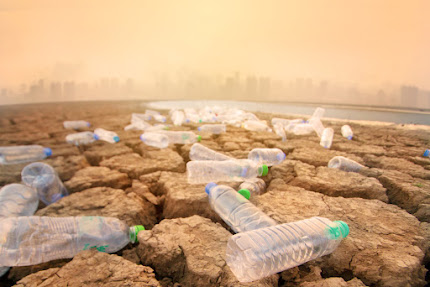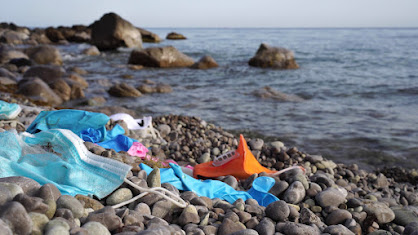Many people think you just need to recycle plastic but plastic is harmful to the environment for a variety of reasons. We need to focus on ways to eliminate plastic usage and not just recycle. Other impacts of plastic are below:
Non-Biodegradability: Most plastics do not biodegrade naturally. Instead, they break down into smaller and smaller pieces over time, eventually becoming microplastics that persist in the environment for hundreds of years.
Pollution: Plastic pollution is a significant problem, especially in oceans and waterways. Discarded plastic items like bags, bottles, and packaging can end up in water bodies, harming aquatic life and ecosystems. Marine animals often ingest or become entangled in plastic debris.
Fossil Fuel Dependency: The production of plastic is heavily reliant on fossil fuels, particularly oil and natural gas. E
Toxic Chemicals: Many plastics contain harmful chemicals, such as phthalates, bisphenol A (BPA), and flame retardants, which can leach into the environment. These chemicals can have adverse effects on wildlife and potentially find their way into the human food chain.
Energy-Intensive Production: The manufacturing of plastics requires a significant amount of energy. This contributes to carbon emissions and places a strain on energy resources.
Landfill Overflow: Plastics make up a considerable portion of landfills, taking up space that could be used for biodegradable waste. Over time, they can release toxins into the soil and groundwater.
Wildlife Impact: Wildlife often mistake plastic items for food, leading to ingestion and potential harm or death. Additionally, animals can become entangled in plastic waste, which can be fatal.
Microplastics: As larger plastic items degrade, they break into tiny particles known as microplastics. These microplastics can be ingested by small organisms and enter the food chain, potentially posing risks to human health.
Aesthetic and Recreational Impact: Plastic pollution can spoil natural landscapes, making them less enjoyable for people and harming tourism and outdoor recreational activities.
Recycling Challenges: While recycling can mitigate some of the environmental impacts of plastics, it is not a perfect solution. Many plastics are not easily recyclable due to the complexity of their composition, and the recycling process itself consumes energy and resources.
Single-Use Plastics: The prevalence of single-use plastics, such as plastic bags, straws, and disposable utensils, contributes significantly to plastic pollution. These items are often used for just minutes but can persist in the environment for centuries.
Microfiber Pollution: Synthetic fabrics like polyester release microfibers into the water when washed, which are a form of microplastic. These microfibers can also harm aquatic life.
Economic Costs: Cleaning up plastic pollution, managing waste, and addressing its environmental and health impacts impose significant economic burdens on governments, communities, and industries.
In light of these environmental concerns, there have been efforts worldwide to reduce plastic consumption, promote recycling, develop alternative materials, and raise awareness about the consequences of plastic pollution. These actions aim to mitigate the negative impact of plastics on the environment and create a more sustainable future.





Comments
Post a Comment